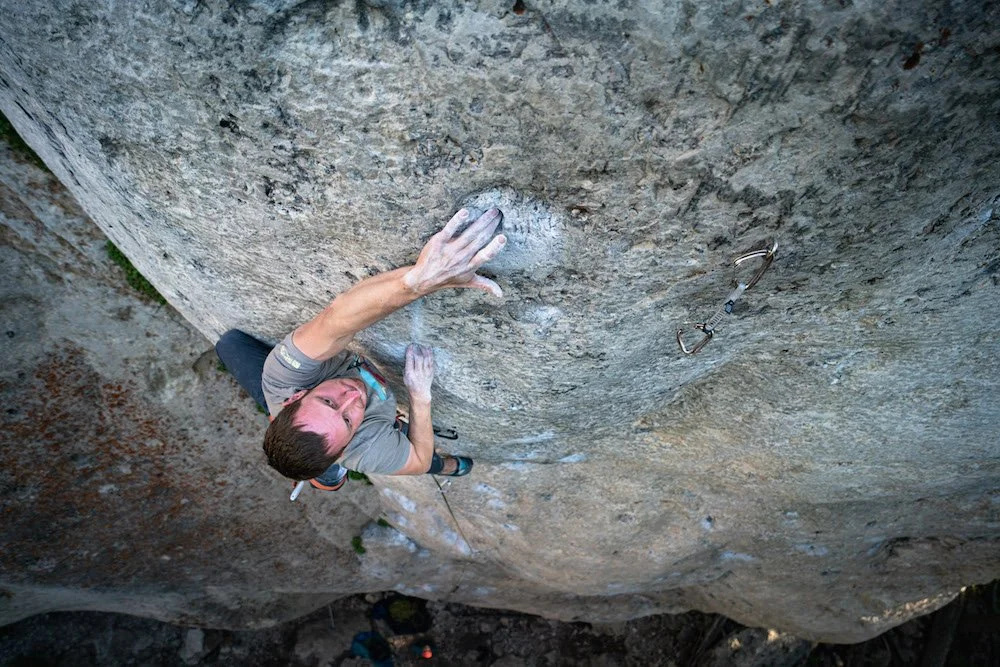How To Improve Your Outdoor Rock Climbing
Learning outdoor rock climbing techniques is an exciting journey that opens up a world of adventure and challenge. Whether you're a beginner looking to start your climbing journey or an intermediate climber aiming to improve your skills and tackle more challenging routes, mastering outdoor rock climbing techniques is essential. In this article, we'll explore how you can learn and improve your outdoor rock climbing skills, from basic techniques to advanced strategies, so you can climb confidently and safely.
Jason climbing on Intersection Rock in Joshua Tree National Park. Photo by Dalton Johnson
Understanding Outdoor Rock Climbing
Before delving into specific techniques, it's crucial to understand the basics of outdoor rock climbing. Outdoor climbing differs from indoor climbing in various ways, including:
Natural Elements: Outdoor climbs involve real rock formations, which can vary in texture, shape, and difficulty.
Environmental Factors: Weather conditions, such as wind, rain, and temperature, play a significant role in outdoor climbing.
Route Finding: Unlike indoor gyms with marked routes, outdoor climbs require you to navigate and find your way up the rock.
Essential Outdoor Rock Climbing Techniques
Basic Climbing Moves:
Footwork: Focus on placing your feet precisely on footholds to maintain balance and conserve energy.
Handholds: Learn different types of handholds, including crimps, jugs, slopers, and pockets, and practice using them effectively.
Body Positioning: Keep your body close to the rock, use your legs to push upward, and maintain a balanced and relaxed posture.
Belaying and Rope Management:
Belaying Techniques: Master belaying techniques for lead climbing and top-rope climbing, including proper use of belay devices and communication with your climbing partner.
Rope Management: Learn how to manage your rope efficiently, including coiling, flaking, and tying knots correctly.
Anchoring and Safety:
Anchor Building: Understand how to build solid anchors using natural features or artificial gear, such as cams, nuts, and slings.
Safety Protocols: Familiarize yourself with safety protocols, including checking gear, conducting partner checks, and communicating effectively while climbing.
Route Reading and Strategy:
Route Reading: Develop the ability to read climbing routes, identify key holds and sequences, and plan your ascent strategically.
Resting and Pacing: Learn when and how to rest on the route, manage your energy, and pace yourself for sustained climbing.
Steps to Improve Your Outdoor Climbing Skills
Take a Climbing Course: Enroll in a climbing course or hire a certified climbing guide to learn essential outdoor climbing skills, safety protocols, and techniques.
Practice Regularly: Dedicate time to practice climbing regularly, both indoors and outdoors, to build strength, technique, and confidence.
Climb with Experienced Partners: Climb with experienced climbers who can provide guidance, mentorship, and feedback on your technique and progress.
Focus on Technique: Work on refining your climbing technique, including footwork, hand placements, body positioning, and route reading.
Gradually Increase Difficulty: Progressively challenge yourself by climbing routes of increasing difficulty, focusing on improving specific skills with each climb.
Learn from Mistakes: Embrace mistakes as learning opportunities, analyze your climbs, identify areas for improvement, and adjust your approach accordingly.
Cross-Train: Incorporate cross-training activities such as strength training, flexibility exercises, and cardio workouts to enhance your overall fitness for climbing.
Stay Safe: Prioritize safety at all times by using proper climbing gear, checking equipment regularly, following safety protocols, and communicating effectively with your climbing partner.
Types of Outdoor Rock Climbing
Sport Climbing: Climbing routes with pre-placed bolts for protection, focusing on movement and technique.
Traditional (Trad) Climbing: Placing your own protection, such as cams and nuts, as you ascend, requiring advanced skills in anchor building and gear placement.
Bouldering: Climbing short, challenging routes without ropes, focusing on strength, technique, and problem-solving.
Multi-Pitch Climbing: Climbing longer routes that require multiple rope lengths and intermediate belay stations, emphasizing endurance and route-finding skills.
Climbing Style and Progression
Your climbing style evolves as you gain experience and skills. Focus on:
Efficiency: Minimize unnecessary movements and conserve energy for sustained climbs.
Fluidity: Develop a smooth and fluid climbing style, transitioning seamlessly between holds and movements.
Problem-Solving: Approach climbs as puzzles, analyzing sequences, and finding creative solutions to challenging sections.
Adaptability: Adapt your climbing style to different rock types, angles, and conditions encountered outdoors.
Placing a number one while pulling the lip on the direct line of Surrealistic Pillar at Lover’s Leap in Lake Tahoe, CA. Photo by Dalton Johnson
Learning outdoor rock climbing techniques is a rewarding and ongoing process that combines physical skills, mental focus, and technical knowledge. By understanding fundamental techniques, practicing regularly, seeking mentorship, and challenging yourself progressively, you can become a confident and proficient outdoor rock climber. Embrace the adventure, stay safe, and enjoy the exhilarating experience of climbing in nature's playground.











